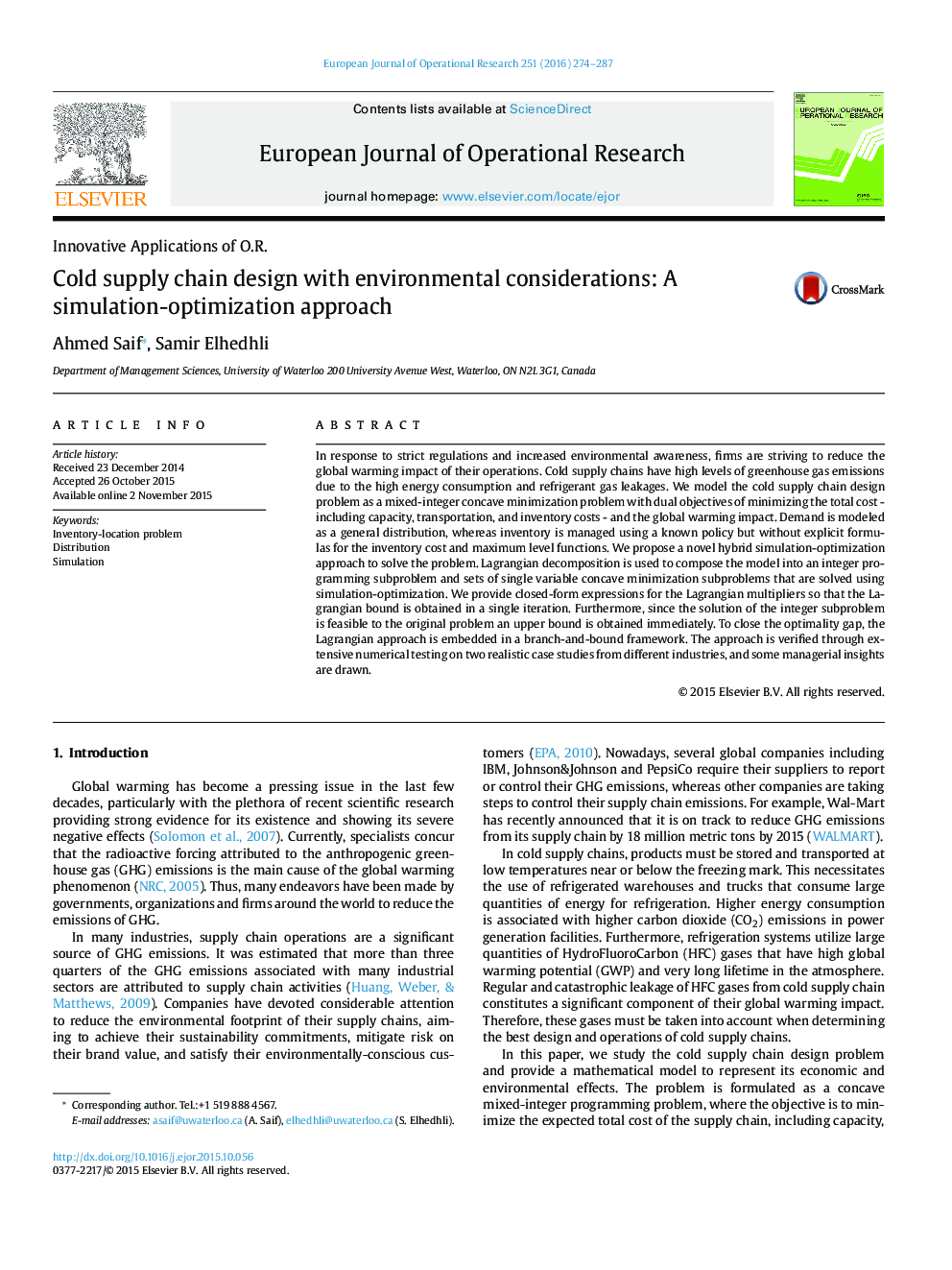| Article ID | Journal | Published Year | Pages | File Type |
|---|---|---|---|---|
| 480647 | European Journal of Operational Research | 2016 | 14 Pages |
•The cold supply chain design problem is modeled as a concave MIP.•A new Lagrangian approach embedded in B&B is developed to solve it.•Unknown inventory functions are estimated using simulation-optimization.•The global warming impact of both CO2 and refrigerant gases is considered.•Realistic cases with different characteristics are solved to optimality.
In response to strict regulations and increased environmental awareness, firms are striving to reduce the global warming impact of their operations. Cold supply chains have high levels of greenhouse gas emissions due to the high energy consumption and refrigerant gas leakages. We model the cold supply chain design problem as a mixed-integer concave minimization problem with dual objectives of minimizing the total cost - including capacity, transportation, and inventory costs - and the global warming impact. Demand is modeled as a general distribution, whereas inventory is managed using a known policy but without explicit formulas for the inventory cost and maximum level functions. We propose a novel hybrid simulation-optimization approach to solve the problem. Lagrangian decomposition is used to compose the model into an integer programming subproblem and sets of single variable concave minimization subproblems that are solved using simulation-optimization. We provide closed-form expressions for the Lagrangian multipliers so that the Lagrangian bound is obtained in a single iteration. Furthermore, since the solution of the integer subproblem is feasible to the original problem an upper bound is obtained immediately. To close the optimality gap, the Lagrangian approach is embedded in a branch-and-bound framework. The approach is verified through extensive numerical testing on two realistic case studies from different industries, and some managerial insights are drawn.
